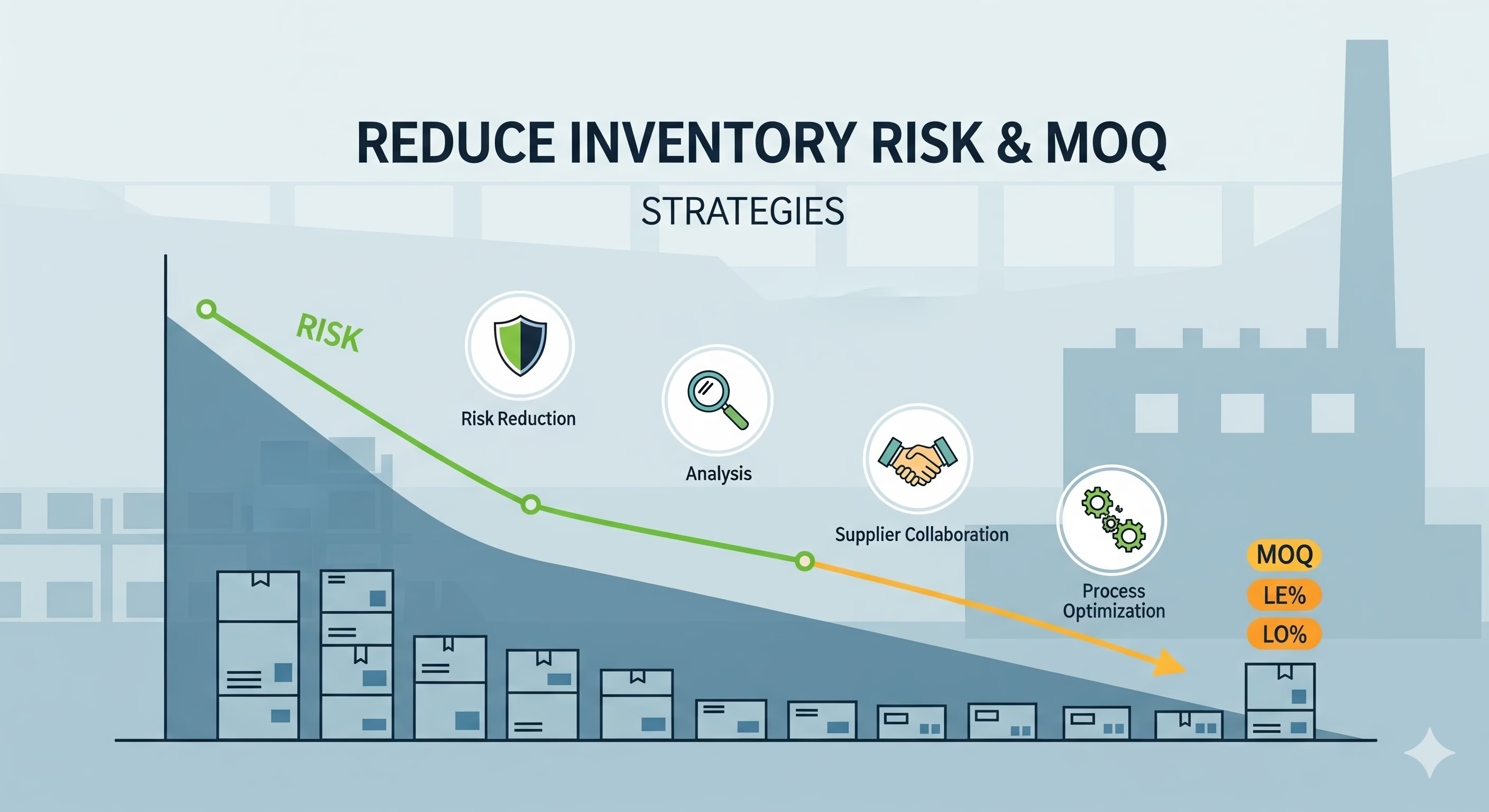Como escolher o MOQ correto: Guia de uma empresa em fase de arranque para reduzir o risco de inventário
Como escolher o MOQ correto: Guia de uma empresa em fase de arranque para reduzir o risco de inventário

Como fabricante de vestuário para crianças, tive o privilégio de ajudar inúmeros fundadores de start-ups a transformar os seus sonhos num produto tangível. A energia é sempre eléctrica, mas há uma conversa que inevitavelmente traz um novo fundador de volta à realidade: a Quantidade mínima de encomenda (MOQ). Vejo a ansiedade nos seus olhos quando se preocupam com a possibilidade de imobilizarem um capital precioso e acabarem com uma montanha de stocks não vendidos. Este é o maior receio de qualquer novo marca de roupa para bebéE eu estou aqui para vos dizer que, com a estratégia certa, podem encontrar um equilíbrio que proteja a vossa empresa de riscos desnecessários.

Com 17 anos de experiência, a petelulu oferece uma gama completa de
serviços de fabrico desde a conceção até à entrega.
Comece do zero, crie a sua própria marca.
17+
servindo as 10 principais marcas americanas
15+
servindo as 10 principais marcas australianas
12+
ao serviço das 10 principais marcas europeias
Contacte-nos para obter o orçamento.👇
O problema: o dilema da qualidade elevada e as suas consequências
Para um fabricante, um MOQ elevado é uma questão de eficiência. Temos custos fixos para instalar máquinas, adquirir matérias-primas e gerir a mão de obra. Uma encomenda grande ajuda-nos a amortizar estes custos, tornando o projeto mais rentável. No entanto, para uma marca de roupa para bebéSe o seu produto for muito caro, um MOQ elevado pode parecer uma armadilha financeira. É um problema que abordamos constantemente.
-
Restrição de fluxo de caixa: O dinheiro que gasta com um MOQ elevado é dinheiro que está agora bloqueado no inventário e não em áreas essenciais como marketing de vestuário para bebésA empresa está a desenvolver a sua equipa ou a desenvolver novos projectos. Esta situação pode travar o seu crescimento antes mesmo de ter tido a oportunidade de ganhar impulso.
-
Risco de inventário: E se um estilo não vender tão bem como esperava? Um MOQ elevado significa que fica com stock em excesso. Isto obriga-o a fazer descontos, o que corrói as suas margens e pode prejudicar a imagem da sua marca. O risco de ter um inventário "morto" é uma ameaça real à sobrevivência da sua empresa.
-
Falta de agilidade: A natureza acelerada do mercado de vestuário exige que seja ágil. Uma encomenda maciça e com um elevado nível de qualidade pode impedi-lo de se adaptar rapidamente às novas tendências ou ao feedback dos consumidores. Quando tiver esgotado o seu stock, o mercado pode já ter seguido em frente.

Com 17 anos de experiência, a petelulu oferece uma gama completa de
serviços de fabrico desde a conceção até à entrega.
Comece do zero, crie a sua própria marca.
17+
servindo as 10 principais marcas americanas
15+
servindo as 10 principais marcas australianas
12+
ao serviço das 10 principais marcas europeias
Contacte-nos para obter o orçamento.👇
A solução: Uma abordagem estratégica ao MOQ
Penso que a melhor abordagem ao MOQ não é temê-lo, mas sim compreendê-lo e utilizá-lo em seu benefício. Encontrar o número certo é uma decisão estratégica que tem de estar alinhada com o seu modelo de negócio e não apenas com os requisitos de um fabricante. Ajudamos os nossos parceiros a encontrar o seu "ponto ideal" através de uma abordagem faseada.
-
Fase 1: A encomenda mais pequena possível (amostras e protótipos): Antes mesmo de pensar numa produção completa, concentramo-nos em algumas amostras. Não se trata de atingir um MOQ; trata-se de validar o seu design, testar o ajuste e o tecido e obter feedback inicial. Não podemos atingir um ponto de preço lucrativo com apenas algumas unidades, mas este pequeno investimento é inestimável para a redução de riscos.
-
Fase 2: O lançamento inicial (gestão de baixo MOQ): Depois de ter finalizado o seu design, é altura de fazer uma encomenda pequena e manejável. Esta encomenda não se destina a maximizar o lucro por unidade; destina-se a testar os seus canais de vendas, a provar o seu conceito e a avaliar a procura dos consumidores sem assumir um risco de inventário maciço. Embora o preço por unidade seja superior ao de uma encomenda maior, está a pagar pelos dados valiosos e pelo risco reduzido.
-
Fase 3: Aumento de escala (o MOQ ótimo): À medida que obtém dados de vendas e constrói uma base de clientes, poderá efetuar uma encomenda maior e mais rentável. É aqui que pode tirar partido das economias de escala. Ao construir uma relação e provar a sua capacidade de vendas, nós, como seu parceiro de fabrico, podemos oferecer-lhe melhores preços e condições, ajudando a sua empresa a tornar-se mais rentável.

Estratégias acionáveis para reduzir o risco de MOQ e de inventário
Nos meus anos de trabalho na fábrica, vi algumas estratégias inteligentes que ajudaram novas marcas a ter sucesso.
-
Comece com menos SKUs: Em vez de lançar dez estilos, concentre-se em um ou dois produtos principais que tem a certeza de que vão vender. Isto permite-lhe atingir um MOQ mais razoável por produto, tornando o tamanho total da encomenda muito mais fácil de gerir para uma empresa em fase de arranque marca de roupa para bebé.
-
Utilizar tecidos em stock: Pergunte ao seu fabricante se tem algum tecido "em stock" que possa utilizar. A aquisição de novos materiais requer frequentemente o seu próprio MOQ da fábrica de tecidos. Ao utilizar materiais que já temos à mão, podemos reduzir significativamente o MOQ da sua encomenda.
-
Construir uma parceria baseada na confiança: Uma relação forte com o seu fabricante é o seu maior ativo. À medida que cresce e faz mais encomendas, é mais provável que ofereçamos condições flexíveis e MOQs mais baixos, porque confiamos em si e valorizamos o seu negócio repetido. Estamos empenhados no seu sucesso.
-
Tirar partido da análise: Utilize os seus dados de vendas para tomar decisões informadas. "Ao tirar partido da gestão de inventário em tempo real e da análise de vendas, as marcas podem reduzir significativamente o risco de excesso de stock e melhorar o fluxo de caixa". Não adivinhe; utilize os dados para decidir quando e quanto deve reordenar. Esta é uma parte essencial da gestão inteligente de marketing de vestuário para bebés e gestão de empresas.
Em última análise, navegar no MOQ é encontrar o parceiro certo. A minha equipa e eu não estamos apenas interessados no tamanho da sua primeira encomenda; estamos empenhados no sucesso a longo prazo da sua marca. Ao trabalharmos juntos para gerir estrategicamente o seu MOQ, podemos garantir que marca de roupa para bebé cresce de forma sustentável, sem o ónus de inventários e riscos excessivos.
Sobre o autor
Xhiney, fundadora da Petelulu, tem mais de 20 anos de experiência em design, produção e comércio internacional de vestuário para crianças. Colaboradora da Roupa de criança e Júnior Xhiney passou 17 anos a trabalhar com marcas de roupa de criança de gama alta na Europa e nos EUA, oferecendo conhecimentos especializados e apoio.
